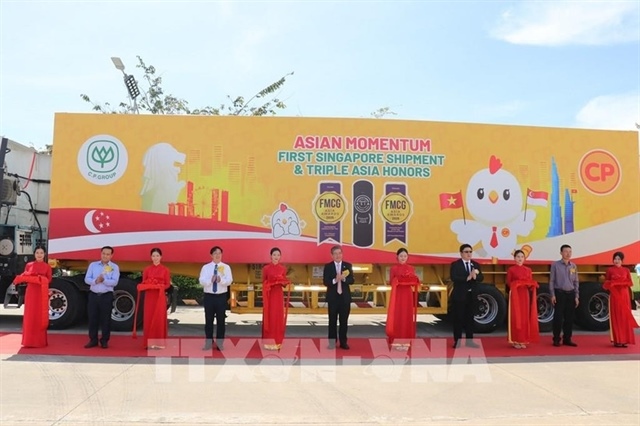Firms need help to cut inventory, restore production
Firms need help to cut inventory, restore production
Slashing value-added-tax and allowing the use of inventory as collateral for bank loans are among several measures that can help firms restore production and trading in a sluggish economy, experts say.
Rising inventory is one of the biggest obstacles firms are facing as they struggle to recover and stabilise their business. It is the main culprit behind the closure of thousands of enterprises, low credit growth in the banking sector, and unemployment of thousands of people.
According to a report prepared by the Ministry of Industry and Trade, the inventory rate at domestic enterprises in May was still at a high level.
Stockpiles in the vegetables and fruits processing and preserving industry increased 123.2 per cent; metal products, 62.8 per cent; cement, 52.3 per cent; motorbikes, 42.3 per cent; furniture, 10.4 per cent, and pharmaceutical products, 9.6 per cent.
The increasing inventories were stifling production, enterprise leaders said.
For instance, the Viet Nam Steel Association said that the industry's output in May was just 410,000 tonnes, down 50,000 tonnes over April.
However, its steel inventory still stood at 320,000 tonnes by late May, up by 65,000 tonnes over the previous month.
Consequently, many steel plants are running at between 50 and 60 per cent of their capacity.
Le Huy Hoang, director of the Binh Dinh Tunnel Brick Company, said his company still had nearly five million bricks in stock so its capacity now has been cut to 60 per cent.
The market's consumption of clothing has been very low, forcing his company's production down by between 30 and 40 per cent compared to the same period last year, according to Nguyen Huu Toan, deputy general director of the Sai Gon Garment Company No 2.
Distributors have also had to cope with the inventory problem. They have tried to reduce it by launching several sales promotion programmes, but consumption has not picked up as expected.
Dealing with inventories
Enterprises have implemented several measures to deal with rising inventories, many of which are aimed at cutting product prices in order to encourage consumption, said Nguyen Dinh Cung, deputy director of the Central Institute of Economic Management.
Lowering product prices was the right action, but it was difficult to do it in such a way that the market's purchasing power improved, he said.
Recently, many producers and distributors have repeatedly launched several sales promotion programmes, but consumption at the enterprises as well as trade centres had not improved strongly.
Though inflation was reduced significantly, prices of many kinds of products have not fallen accordingly, hence consumers were not encouraged to buy, Cung said.
Senior economist Vu Dinh Anh suggested that the value-added tax (VAT) be slashed since it would help cut prices significantly, encourage market demand, and therefore reduce inventories.
Echoing Anh, economist Bui Kien Thanh also said the Government should have consumption stimulation policies in which enterprises would be exempted from paying VAT so that they can lower production costs and thus make it easier to sell their inventory.
Thanh also advised banks to allow enterprises to use their inventory as collateral for loans to help them have capital to recover production.
Limiting imports of the kinds of products that could be produced domestically would also support domestic enterprises in partly settling their inventory problem, he said.
National sales promotion programmes should focus on measures to fully utilise the domestic market, while enterprises should give priority to making quality products at reasonable prices since these are most favoured by consumers, said Vu Tien Loc, chairman of the Viet Nam Chamber of Commerce and Industry.
Loc said many Vietnamese businesses had not yet paid due attention to the domestic market as well as markets in the ASEAN region and China. These places had large populations that needed commodities of "standards suitable to Vietnamese products."
If Vietnamese enterprises could exploit these markets, their inventory problem would be settled effectively and in a stable manner, he said.
vietnamnews




















